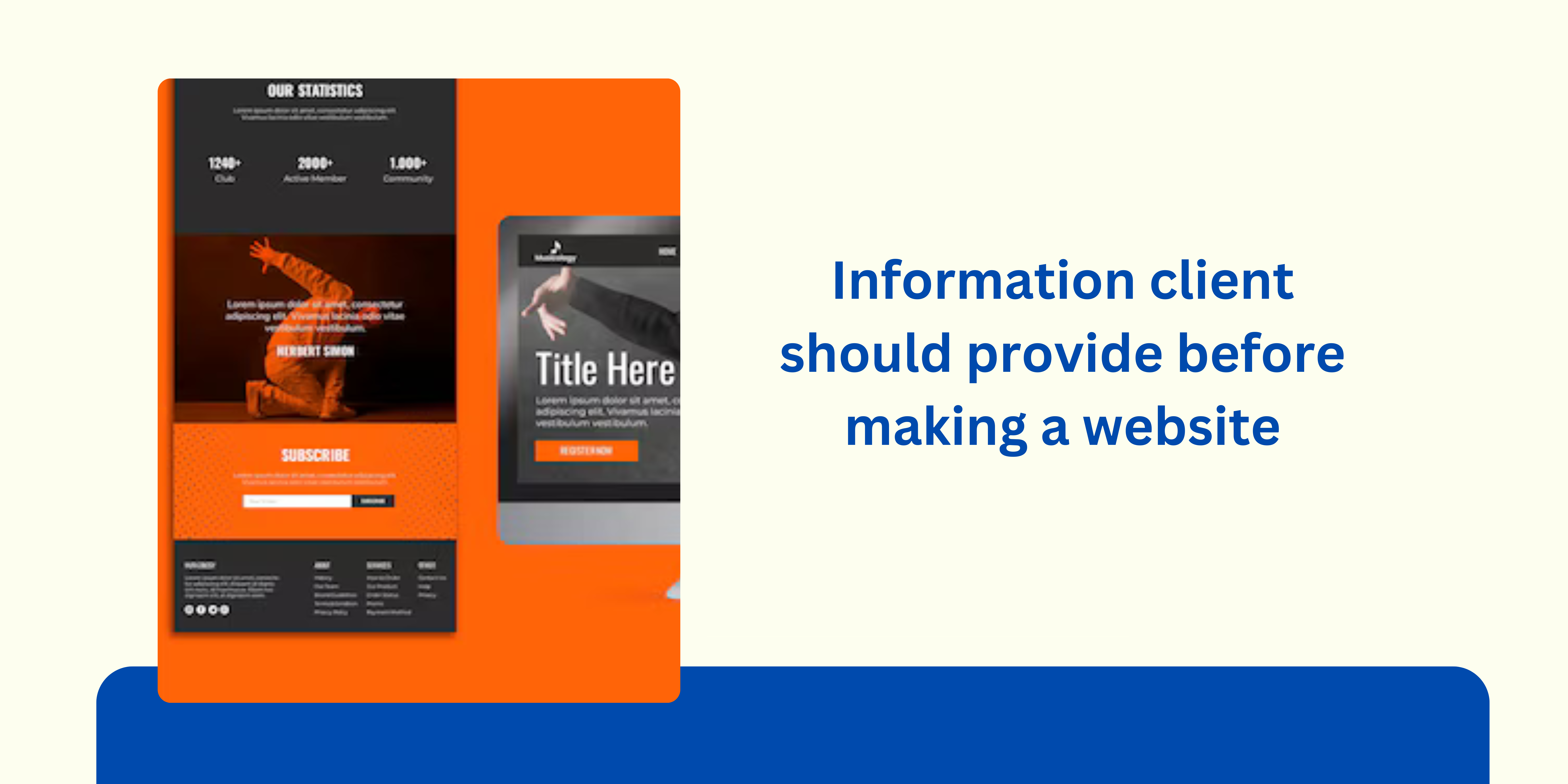SHARE

Creating a website involves several key steps and details that you need to communicate to a web design agency to ensure they deliver exactly what you need. Here’s a comprehensive guide to the mandatory information you should provide:
Business Information
Start by providing your official business name and any taglines or slogans. Include comprehensive contact information such as your address, phone number, email, and any other relevant details. Offer a detailed description of what your business does, its history, mission, and vision. It's also important to outline your target audience, including demographic details such as age, gender, interests, and any other pertinent information.
Website Purpose and Goals
Clearly define the primary purpose of your website. Whether it's to sell products, provide information, generate leads, offer services, or something else, make this explicit. Specify the specific goals you want to achieve, such as increasing online sales, improving customer engagement, or growing your email list. This helps the design agency understand the end goals and tailor the website accordingly.
Content Requirements
Outline the structure of your website by listing the pages you need, such as Home, About, Services, Products, Blog, and Contact. Clarify whether you will provide the content (text, images, videos) or if you need the agency to create it. Additionally, specify any SEO requirements, including specific keywords or strategies you want to be implemented. This ensures that the website is optimized for search engines from the start.
Design Preferences
Communicate your design preferences by detailing your preferred colors, fonts, and overall style (modern, minimalist, professional, etc.). Provide any branding assets, such as logos and brand colors, that should be incorporated into the design. Share examples and inspirations by linking to websites you like and highlighting specific features you want to include. This helps the design agency capture your vision accurately.
Functional Requirements
List the essential features your website needs to function effectively. For e-commerce sites, this includes a shopping cart, product pages, and payment gateways. For user interaction, consider forms, live chat, forums, and social media integration. Identify any special features, such as booking systems, membership areas, or event calendars. Ensure that the site is responsive and works seamlessly on all devices and browsers.
Technical Specifications
Provide details about your hosting and domain, including whether you already have them or need assistance setting them up. Specify your content management system (CMS) preference, such as WordPress, Shopify, or Joomla. Identify any third-party services that need to be integrated, such as CRM systems or email marketing tools. This ensures that the technical setup meets your operational requirements.
Security and Compliance
Detail the security features you require, such as SSL certificates, data protection measures, and user authentication. Include any compliance requirements relevant to your industry and location, such as GDPR or ADA compliance. This ensures that your website is secure and adheres to legal standards.
Budget and Timeline
Clearly indicate your budget for the project to ensure that the design agency can tailor their services to meet your financial constraints. Provide a desired launch date and any critical deadlines. This helps manage expectations and ensures that the project progresses smoothly within your timeline.
Maintenance and Support
Outline your requirements for post-launch support, including ongoing maintenance, updates, and technical support. Specify if you need training on how to manage the website content and updates. This ensures that you can effectively manage and maintain your website after it goes live.
Analytics and Performance Tracking
Detail your preferences for analytics tools, such as Google Analytics, to track the performance of your website. Specify the key performance indicators (KPIs) you want to monitor, such as traffic, conversions, and bounce rate. This helps you measure the success of your website and make data-driven decisions for future improvements.
By providing this comprehensive information, you can ensure that the web design agency has a clear understanding of your requirements and can deliver a website that meets your business needs and objectives.